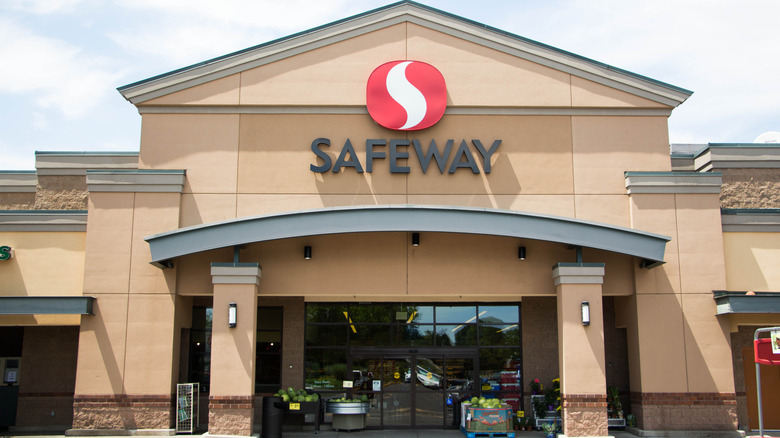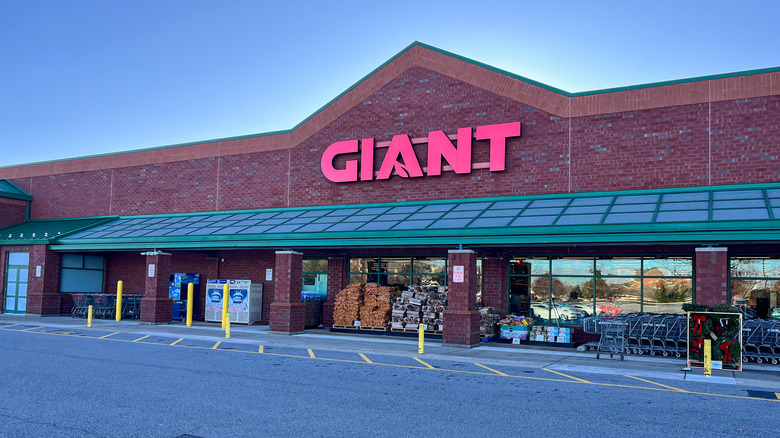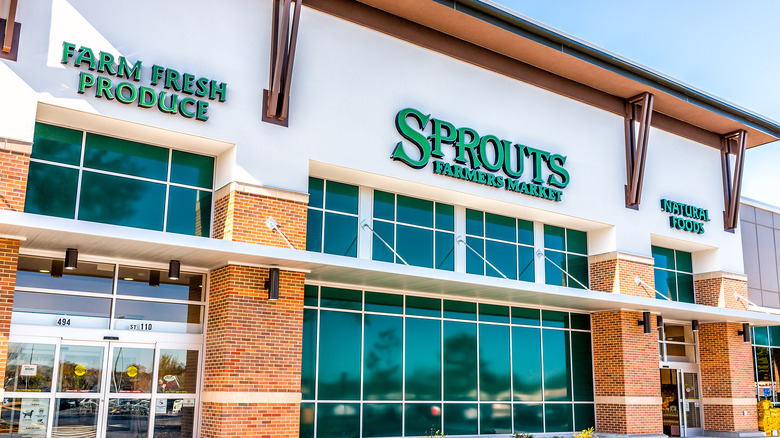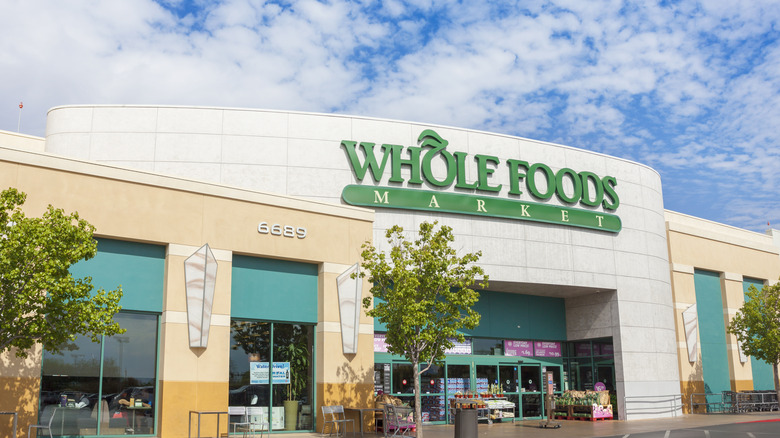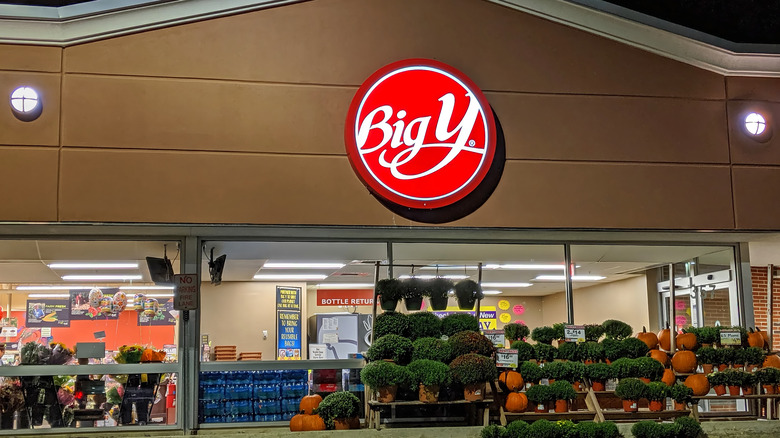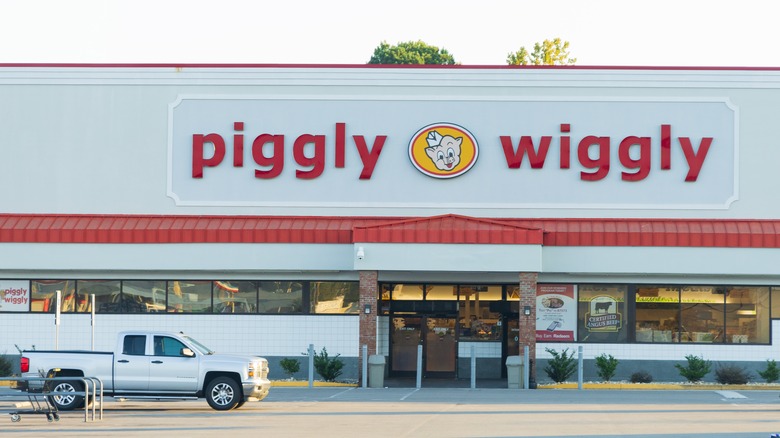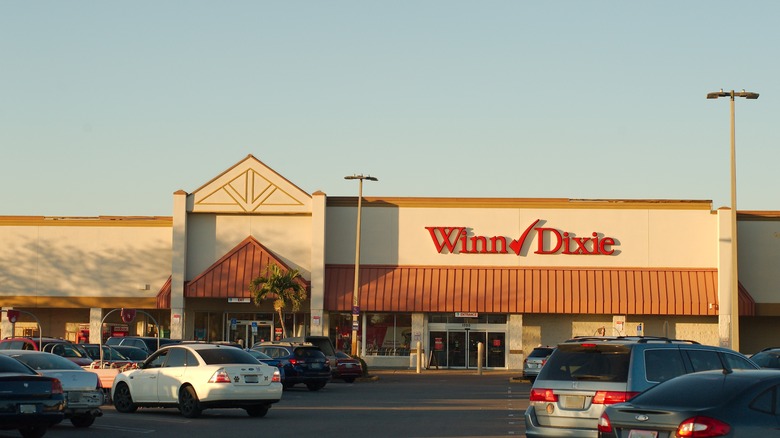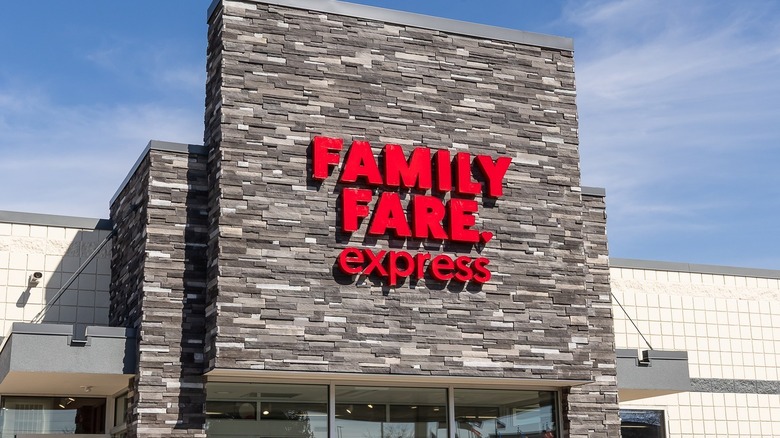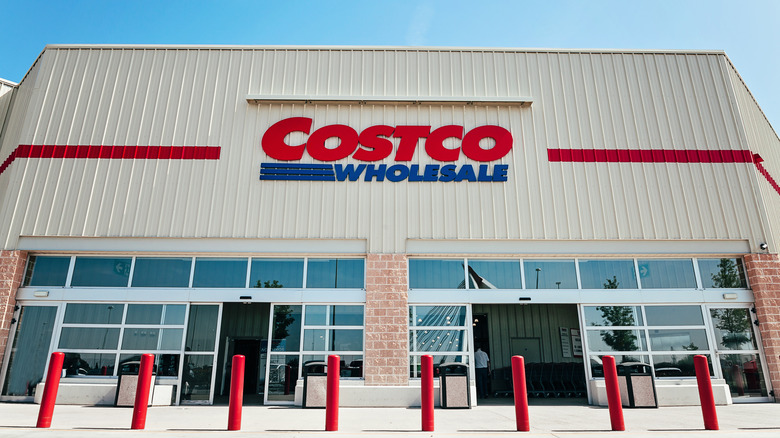The 9 Best Grocery Store Loyalty Programs
We are all feeling the pinch these days as the food prices continuing to rise, so finding ways to save has become more important than ever. The good news is that most grocery stores offer rewards programs designed to put a little money back in your pocket. Since you're already buying groceries anyway, you might as well get something in return for your loyalty. The tricky part is that not all rewards programs are created equal. Some offer a solid 1% to 2% back on purchases, while others provide less generous returns but make up for it with other perks. You'll find programs that include fuel discounts, free delivery, personalized coupons, and exclusive member deals.
Another thing to consider is whether a program is free to join or requires a paid membership. Most grocery store loyalty programs don't cost anything to sign up, which makes them a no-brainer if you shop there regularly. However, a few stores charge an annual membership fee, usually around $50. Whether those paid programs are worth it depends on how much you spend and which perks you'll actually use.
To put together this guide, we evaluated each grocery rewards program based on factors like point-earning rates, expiration policies, additional perks such as fuel discounts and delivery savings, ease of use, membership costs, and geographic availability. Our goal is to give you a clear picture of what each program actually offers so you can choose one that fits your budget and shopping habits.
Safeway/Albertsons
There are two rewards programs on offer at Safeway and Albertsons. The first, "For U" is completely free. In terms of points, you earn one point for every $1 spent, two points for gift cards, and many selected products have more points. You can then turn every 100 Points into $1 off at the checkout or $0.10 off per gallon at the gas station. There's also a great range of coupons and personalized deals on groceries, and even a free item every month. You'll get a welcome offer when you sign up and a free treat on your birthday. It's a no-brainer to sign up just for these freebies, really. However, one thing to keep in mind is that points earned will expire within two calendar months. So if you earn the points in January, they will expire at the end of February.
The second option is the "Fresh Pass" that you can purchase for $99 a year or $12.99 a month. With it you'll get free delivery on orders over $30. You'll also receive $5 monthly credit and earn double points on all the Safeway brands and the points you earn won't expire. You'll save 5% on both O Organics and Open Nature — the home brand natural products line. For the pet lovers, there's also 5% off on the home brand Signature Pet Care — that will add up quickly if you are constantly buying food for your furry friends. Last but not least, you'll receive monthly exclusive Starbucks perks.
Giant
If you live in Maryland or Virginia, you probably pass a Giant during your daily commute. The chain also has a presence in Washington D.C., Delaware, and Pennsylvania, making it a go-to option for Mid-Atlantic shoppers who are looking for a store with a decent rewards program.
The program is called Giant's Flexible Rewards. It's free to join and easy to keep track of with the app. It's got the usual points rewards system — earn one point for every $1 spent. Just 100 points gets you $1 off your next purchase, or $0.10 off per gallon at the gas station. You earn double points on all Giant brand products and also 100 points on select pharmacy products. Members also get access to over $300 in digital coupons every week. There's also a Shell Fuel Rewards program, which is also free to sign up for. Simply link it with your Giant Card and you'll receive $0.05 per gallon in Fuel Rewards savings on every fill up at Shell stations.
The drawbacks? There is quite a short window to use up your points. They expire on the last day of the following month on which they were earned. So if you make a purchase on October 15, the points from that purchase will be usable until November 30, so you'll have to keep on top of it. But if you are near to a Giant and do your weekly shopping there, it would be worth your while signing up to the program. It's free after all.
Sprouts
The points system is a little more generous at Sprouts. Here, you earn 10 points per $1 spent, then with each 1,000 points you'll get a $2 reward on future purchases. This might seem a little confusing, so let's break it down. With most other programs, where $1 spent earns one point and 100 points earns $1 off future purchases, it works out to 1% in rewards. With the Sprouts system, it works out to 2%. Another great feature is that points don't expire for six months.
There are also lots of members only perks, discounts, and personalized offers based on your spending habits. There are over $100 available in coupons each month. For the health conscious, Sprouts offers members expert led wellness classes and access to lots of free recipes. At the time of writing, we found some really fun looking classes to follow along with, like "Pickling 101," "High Protein Bento Box Ideas," and "Gut Friendly Summer Sips and Nutritional Tips." There's also lots of healthy recipe classes like "Apple gallette with rosemary spelt rye crust." You will be able to watch live along with other members and ask questions to the chef or expert.
Sprouts Rewards stacks up pretty well compared to other grocery store loyalty programs, making it worthwhile to sign up even if you only shop there occasionally. If there's a Sprouts location convenient to you, it's worth considering for your regular grocery shopping.
Whole Foods Market
The Whole Foods Market rewards program is linked with Amazon Prime, offering some impressive perks if you're already a member. Prime members get an automatic 10% discount on all sale items throughout the store (excluding alcohol and gift cards), plus access to exclusive member only deals that can add up to significant savings over time. It's a straightforward way to stretch your grocery budget without clipping coupons or tracking points.
Prime members also get some nice perks for delivery and pickup. Delivery fees drop from $13.95 to just $9.95, and if you shop through the Amazon website or app, you can take advantage of ultra-fast two hour delivery windows or one hour pickup times — perfect for those last-minute dinner plans or busy weekday schedules.
If you have both an Amazon Prime membership and the Prime Visa card, you'll earn 5% back on every Whole Foods purchase. Those rewards can be redeemed on future shopping trips at either Whole Foods or Amazon. The bottom line? If you're already paying for Amazon Prime, the Whole Foods rewards program comes free with your membership. Between the sale discounts, delivery savings, and cash back opportunities, it's worth considering Whole Foods for your regular grocery runs.
Big Y
Big Y is a family owned grocery chain with locations throughout Massachusetts and Connecticut, and the rewards program is pretty good. It's got the usual point system; you earn one point for every $1 you spend, and once you hit 100 points, that translates to $1 off your next grocery trip. What's nice is that you can also put those points toward gas savings — 100 points gets you $0.10 off per gallon, which limits to $1.50 per gallon per transaction. You can also redeem your points with free products, as well.
One of the better features of the Big Y program is that your earned points stick around for six months before expiring, giving you plenty of time to accumulate a decent amount. Once you've redeemed points for grocery discounts, fuel savings, or free items, you have 60 days to actually use them. The program also offers personalized discounts based on your usual purchases and plenty of digital coupons, so you're not just relying on points alone to save money.
Everything runs through the Big Y app, which has some nice features. You can create a shopping list by scanning barcodes of items you're running low on at home, and the app will add them for you. There's also an express checkout option where you scan items as you shop and then check out using a QR code at a kiosk — handy if you want to skip the regular checkout line.
Piggly Wiggly
Piggly Wiggly opened its doors in Memphis, Tennessee in 1916, becoming the first self-service grocery store in America. Before that, grocery shopping worked completely differently — customers would hand their lists to clerks, who would gather everything from behind the counter. Piggly Wiggly changed the game by letting shoppers walk through aisles, pick their own items off shelves, and bring them to a checkout counter. It was a revolutionary idea that saved both stores and customers time and money. Interestingly, nobody knows for sure why founder Clarence Saunders chose the quirky name "Piggly Wiggly," and it remains one of retail history's fun little mysteries.
The Piggly Wiggly rewards program is pretty simple and doesn't require carrying around a physical card. You earn points (one point per $1 spent) by entering your phone number at checkout, and once you rack up 100 points, you can redeem them for $1 off your next purchase. It's not the most generous rewards program out there, but it's easy to use and doesn't require downloading anything if you don't want to. That said, there are digital coupons available through both the store's website and app, which can help boost your savings beyond just the points program. Keep in mind that points expire after 90 days. So, if Piggly Wiggly is your neighborhood grocery store, the rewards program is worth signing up for since it's free and effortless — just give them your phone number and you're set.
Winn-Dixie
Winn-Dixie offers a point reward system but it is a little lower than other stores. You earn one point for every $2 you spend, which works out to a 0.5% return — lower than the typical 1% or 2% you'll find at other chains. So if you're purely comparing point earning rates, Winn-Dixie isn't the most competitive. That said, members do get access to plenty of other perks that can make up for it, including sale prices, buy-one-get-one-free deals, and personalized coupons based on your shopping habits. You'll also get a free item on your birthday and a $5 off $30 coupon when you first sign up.
One feature worth paying attention to is the weekly "percentage back offers" that Winn-Dixie sends to members. These can actually be pretty valuable if you catch them at the right time. You can find these offers in the rewards section of the app, on the website, when checking out during online orders, or printed at the bottom of your in-store receipt. Once you activate an offer and complete your shopping trip, you'll earn bonus points based on the percentage. For example, if there's a 10% offer and you spend $100, you'll get $10 back in the form of 1,000 points.
The good news is that points last for six months before expiring, giving you a decent window to accumulate and redeem them without feeling rushed. It's free to join, so if you shop at Winn-Dixie regularly and take advantage of those percentage-back offers when they pop up, it could be worth your while.
Family Fare
The Midwest grocery chain Family Fare takes a different approach by offering a paid membership program. Instead of a free loyalty card, you pay $49 annually to unlock a bundle of perks. With the membership, you get free pickup on every order regardless of size, half-off delivery fees when you spend over $50, and $0.10 off per gallon at the pump with every grocery order. You'll also save 10% on all Our Family brand products and get access to exclusive monthly deals that non-members don't see.
Whether the $49 fee is worth it really depends on how often you shop there and which perks you'd actually use. If you do grocery pickup or delivery regularly, those savings alone could cover the membership cost pretty quickly. The fuel discount is another bonus that adds up if you're filling up your tank weekly. On the other hand, if you prefer shopping in-store and don't buy much gas, you might not get enough value to justify the annual fee.
One nice aspect of the membership is that it works across multiple stores owned by the same parent company, SpartanNash. So if you have access to Family Fresh Market, D&W Fresh Market, Forest Hills Foods, or VG's in your area, you can use the same membership at any of those locations.
Costco
Costco is already loved by many for the saving you can get on groceries. You need to pay for the membership, which gets you in the door, but there's another level called the Executive Membership, which costs an additional $65 annually on top of the standard membership fee (total $130). Executive Members earn an annual 2% reward on qualified Costco purchases — most groceries qualify, it's things like tobacco, gas, and cell phones that are excluded. The maximum reward you can receive is $1,250 per year.
Let's see what this would look like for different spenders. According to the USDA, the estimated monthly food costs for a family of four on a thrifty budget is around $1,000. With the 2% reward, that would work out as a $240 reward over the year. So when you subtract the $65 fee, that is $175 in free groceries. On the lower end, let's say you're a single person or you just spend less at Costco — if you spend $271 per month, you'd break even with a $65 reward at the end of the year that only covers the upgrade cost. If you spend $542 monthly, you'd get $65 after the fee.
Maybe you are a big family or just a bougie foodie? Let's see what the higher bracket gets you. The annual reward of a monthly spend of $2,000 will give you $415 after the fee. Which you would be silly to pass up.
Methodology
When comparing grocery rewards programs, we looked at several key factors to help you understand which ones offer the best value for different shopping habits. We started by examining point-earning rates and redemption value. Some programs offer a straightforward 1% or 2% return, while others have lower base rates but compensate with bonus offers. We calculated what these percentages mean in real dollar amounts so you can see the actual value you're getting back. Point expiration policies were another important consideration, since some programs give you only 90 days to use your points while others offer six months or longer. You don't want to lose points before ever using them.
We looked beyond just points to evaluate additional perks like fuel discounts, delivery fee reductions, birthday rewards, digital coupons, and personalized deals. Sometimes these extras provide more value than the base points program, especially if they align with your lifestyle.
Membership costs were crucial in determining overall value. Most programs are free to join, but some charge annual fees that are usually around $50. For paid programs, we calculated how much you'd need to spend to break even and whether the benefits justify the upfront cost. We also included both major national chains and regional favorites to cover different geographic areas, since the best program doesn't help if there's no store nearby.


